Table of Contents
- Introduction
- Editor’s Choice
- General CRO Statistics
- Average Conversion Rate – CRO Statistics
- Website Optimization – CRO Statistics
- Mobile Conversion Rate – CRO Statistics
- Landing Page Optimization – CRO Statistics
- CRO Statistics – Conversion Funnel
- CRO Statistics – A/B Testing and Conversion Optimization
- CRO Statistics – Personalization and Conversion Rates
- CRO Statistics – User Experience (UX) and Conversion Rates
- Impact of Video Content On CRO Statistics
- Challenges and Pitfalls in CRO
- Recent Developments
- Conclusion
- FAQs
Introduction
CRO Statistics: Conversion Rate Optimization (CRO) is a process of improving the percentage of website visitors or users who take a desired action, such as making a purchase, subscribing to a newsletter, filling out a form, or engaging with specific content.
The goal of CRO is to maximize the conversion rate, which is the ratio of conversions to total visitors.
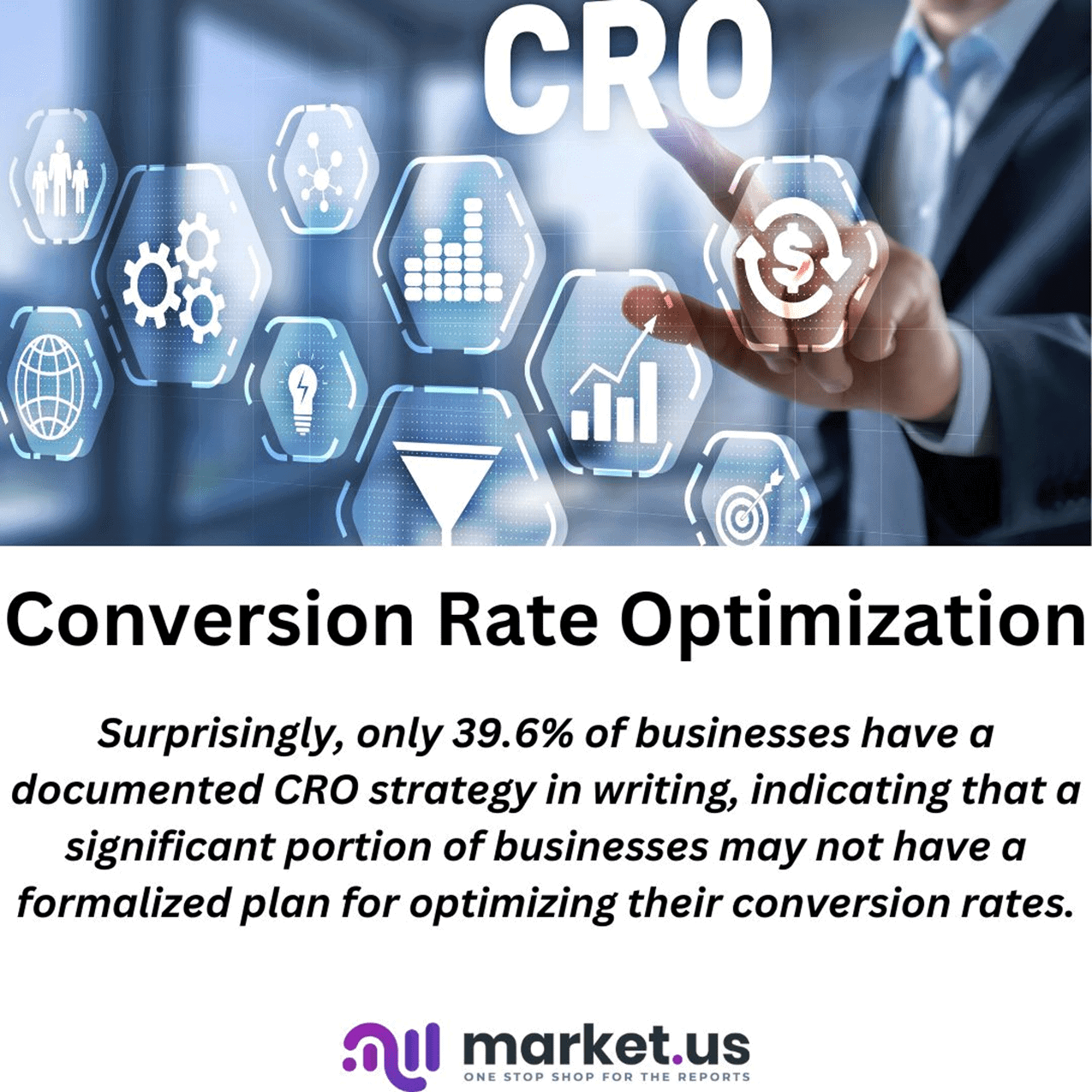
Editor’s Choice
- The Global Customer Relationship Management (CRM) Software Market size is expected to be worth around USD 248.2 Billion by 2033, from USD 75.1 Billion in 2023, growing at a CAGR of 12.7% during the forecast period from 2024 to 2033.
- The average conversion rate across industries is approximately 2.35%. However, the top 25% of companies achieve conversion rates of 5.31% or higher.
- Slow page load times can significantly impact conversion rates. Research shows that a one-second delay in page load time can result in a 7% reduction in conversions.
- Mobile optimization is crucial for CRO. Approximately 57% of internet users say they won’t recommend a business with a poorly designed mobile site.
- Improving user experience (UX) can lead to higher conversion rates. Websites that provide a great user experience are more likely to convert visitors into customers, with an average conversion rate of 4.5% compared to 2.6% for sites with poor user experience.
- A/B testing is an effective strategy for optimizing conversions. Companies that perform A/B testing on their websites see an average conversion rate improvement of 49%.
(Source: WordStream, Akamai, SocPub, Adobe, HubSpot)
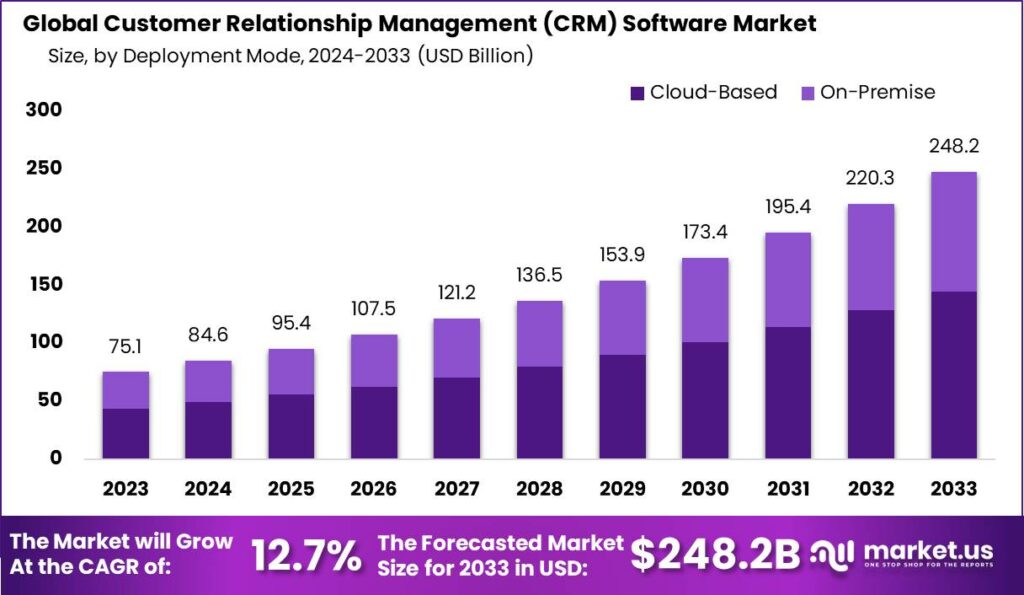
General CRO Statistics
- The average conversion rate across industries is approximately 2.35%. However, the top 10% of companies achieve conversion rates of 11.45% or higher.
- Websites with clear call-to-action (CTA) buttons that stand out in color have an average conversion rate of 17.85%, compared to 11.48% for websites with less prominent CTAs.
- Implementing a live chat feature on a website can increase conversions by up to 45%.
- Including videos on landing pages can increase conversions by up to 86%.
- A one-second delay in mobile page load time can decrease conversions by up to 20%.
- Websites with personalized content and offers for their visitors experience an average conversion rate of 19%, compared to 2.9% for websites without personalization.
- Displaying trust signals, such as security badges and customer testimonials, can increase conversion rates by up to 32%.
- Websites with a simple and streamlined checkout process have an average conversion rate of 23%, compared to 16% for websites with complex checkout processes.
- Implementing social proof elements, such as customer reviews and ratings, can increase conversions by up to 34%.
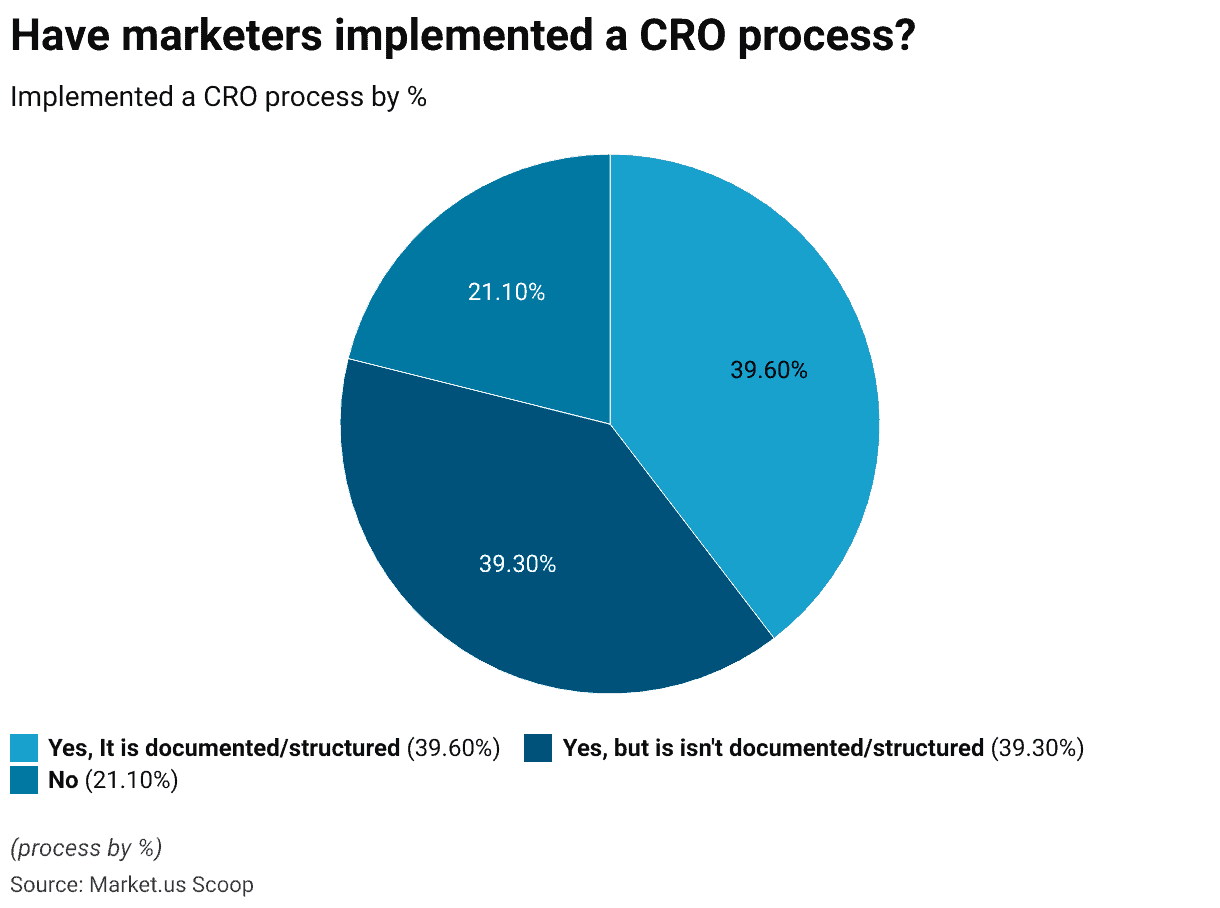
More Info
- Using urgency and scarcity tactics, such as limited-time offers and countdown timers, can increase conversion rates by up to 332%.
- Personalization plays a crucial role in CRO. Research shows that personalized calls-to-action (CTAs) perform 202% better than generic CTAs.
- The average conversion rate for e-commerce websites is around 2.86%. However, top-performing e-commerce sites can achieve conversion rates above 5%.
- Product images have a significant impact on e-commerce conversion rates. High-quality images and multiple product views can increase conversions by up to 9%.
- Customer reviews influence e-commerce conversion rates. 91% of consumers between the ages of 18 and 34 trust online reviews as much as personal recommendations and positive reviews can increase conversion rates by up to 270%.
- Mobile conversion rates are lower compared to desktop, with the average conversion rate for mobile being around 1.53% compared to 4.14% for desktop.
(Source: WordStream, HubSpot, Neil Patel, Eyeview Digital, Google, Instapage, ConversionXL, Baymard Institute, Qualaroo, OptinMonster, Smart Insights, BigCommerce, Spiegel Research Center, Wolfgang Digital)
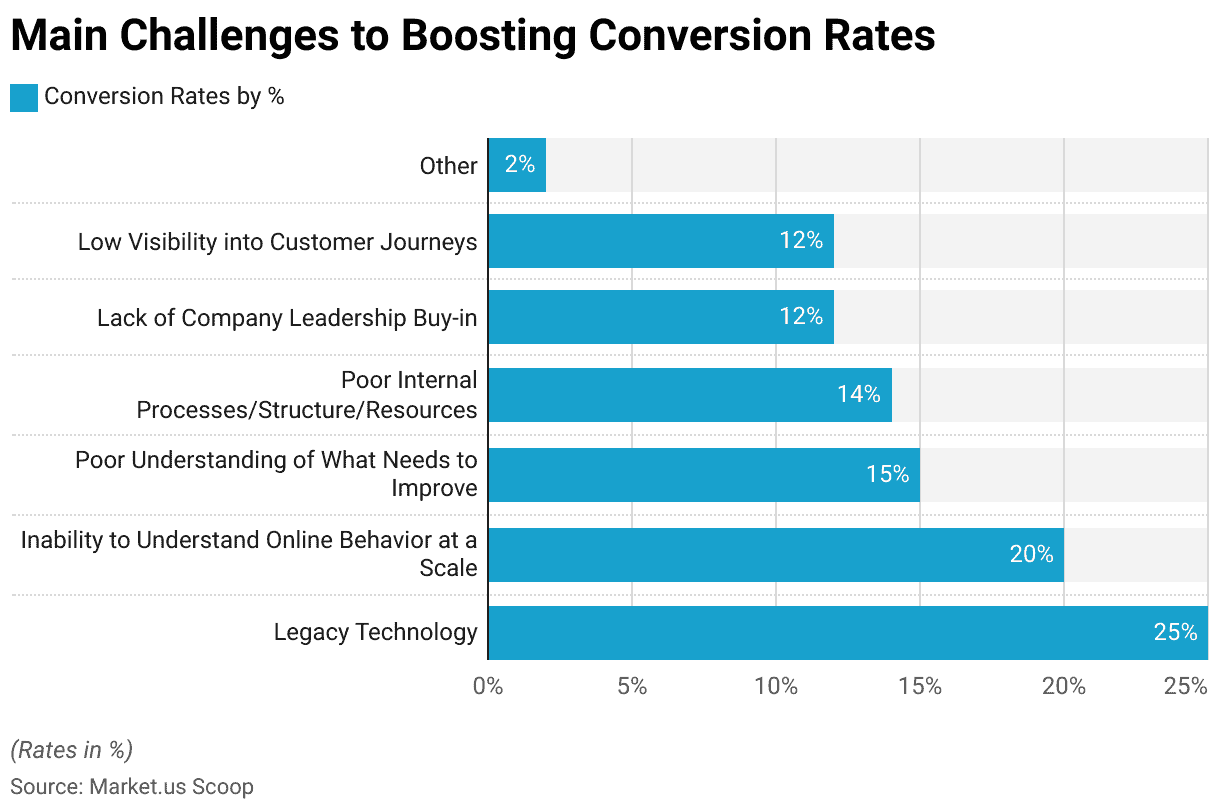
Average Conversion Rate – CRO Statistics
- The average conversion rate for Facebook advertising is 9.21%, indicating that approximately 9.21% of people who interact with Facebook ads end up converting.
- Over just two years, marketers have increased their usage of AI by 190%, highlighting the growing adoption and importance of artificial intelligence in marketing strategies.
- Videos that incorporate conversion events experienced a significant boost of 30% in conversion rates, suggesting that utilizing videos strategically can have a positive impact on driving conversions.
- Web analytics programs are widely used for improving conversions, with a high adoption rate of 69%, indicating that businesses recognize the value of using analytics tools to track and optimize their conversion rates.
- Implementing Conversion Rate Optimization (CRO) technologies has resulted in an average return on investment (ROI) of 223%, emphasizing the effectiveness of CRO strategies in generating positive returns for businesses.
- Surprisingly, only 39.6% of businesses have a documented CRO strategy in writing, indicating that a significant portion of businesses may not have a formalized plan for optimizing their conversion rates.
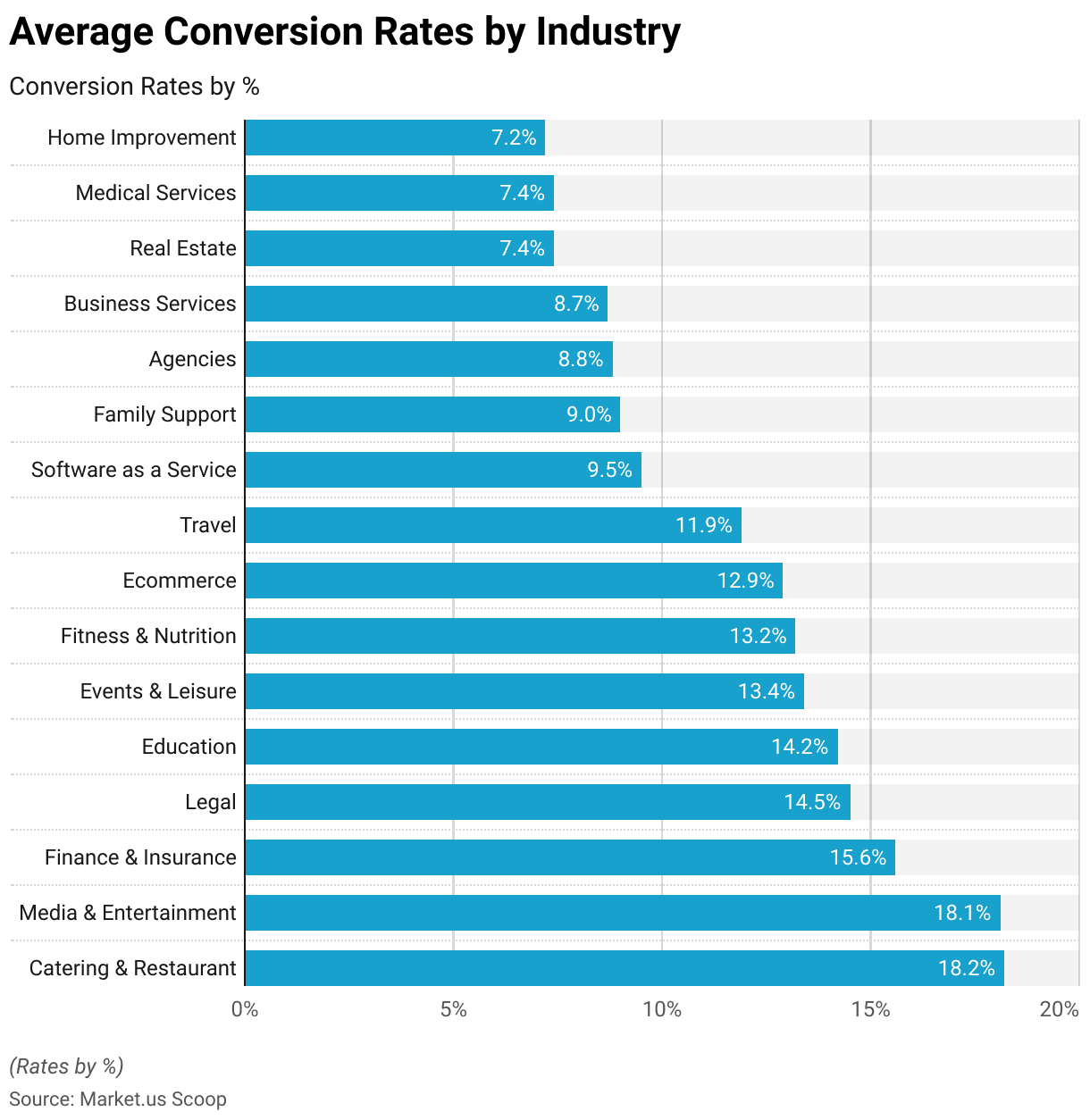
Website Optimization – CRO Statistics
Website Speed
- A one-second delay in page load time can result in a 7% reduction in conversions.
- 53% of mobile site visitors will leave a page that takes longer than three seconds to load.
(Source: Aberdeen Group, Google)
Mobile Optimization
Take advantage of our unbeatable offer - buy now!

- 57% of internet users say they won’t recommend a business with a poorly designed mobile site.
- 88% of consumers who search for a type of local business on a mobile device call or go to that business within 24 hours.
(Source: SocPub, Nectafy)
Clear Calls-to-Action (CTAs)
- Including a CTA button instead of a text, link can increase conversion rates by 28%.
- CTA buttons with contrasting colors to the rest of the page can increase conversion rates by 38%.
(Source: WordStream, HubSpot)
Responsive Web Design
- 85% of adults think that a company’s website when viewed on a mobile device should be as good or better than its desktop website.
- 62% of companies that designed their websites for mobile platforms increased their sales.
(Source: SocPub, Econsultancy)
Visual Appeal and Design
- 94% of first impressions of a website are design-related.
- Websites with simple designs have higher conversion rates than those with complex designs.
(Source: ResearchGate, Crazy Egg)
Website Security
- 85% of online shoppers avoid unsecured websites.
- 61% of website visitors will leave a site if it is deemed untrustworthy.
(Source: GlobalSign, Blue Corona)
Content Quality and Relevance
- 47% of website visitors check out a company’s products/services page before looking at any other sections of the site.
- Personalized content can increase conversion rates by 202%.
(Source: KoMarketing, Instapage)
Mobile Conversion Rate – CRO Statistics
- Mobile commerce (m-commerce) now accounts for a significant portion of total e-commerce sales, with mobile devices driving 73% of all e-commerce growth.
- Mobile conversion rates have been steadily increasing, with the average mobile conversion rate reaching 2.58% globally.
- The average time it takes for a mobile page to fully load is around 15 seconds. However, 53% of mobile site visitors leave a page if it takes longer than 3 seconds to load.
- Mobile users are more likely to make immediate purchases compared to desktop users. Approximately 70% of mobile searches lead to action within an hour, while it takes a full month for the same percentage of desktop users to reach a similar outcome.
- Mobile users are highly influenced by positive user experiences, as 57% of users say they wouldn’t recommend a business with a poorly designed mobile site.
- Mobile optimization is crucial, as 61% of users are unlikely to return to a mobile site they had trouble accessing.
- Mobile shopping cart abandonment remains a challenge, with an average abandonment rate of 85.65% for mobile users.
- Implementing a mobile-responsive design is vital, as 48% of users feel frustrated and annoyed when they visit sites that are not mobile-friendly.
- Push notifications can be effective in driving mobile conversions, with a 7.8% average conversion rate for users who opted in to receive push notifications.
- The average mobile conversion rate for retail e-commerce sites is 2.32%, while the top 25% of sites achieve a mobile conversion rate of 5.31% or higher.
(Source: Statista, Smart Insights, Google, CMS Report, Baymard Institute, Leanplum, Monetate)
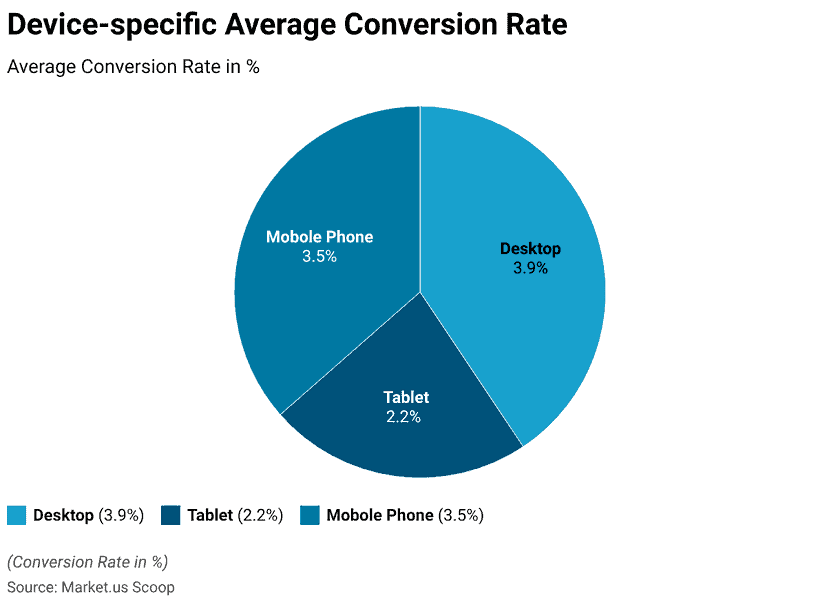
Landing Page Optimization – CRO Statistics
- The average landing page conversion rate across industries is 2.35%.
- Landing pages with a single call-to-action (CTA) can increase conversions by 371%.
- Using videos on landing pages can increase conversions by 86%.
- Including testimonials or reviews on landing pages can increase conversions by 34%.
- Landing pages with a clear value proposition have a 34% higher conversion rate.
- Mobile-optimized landing pages can improve conversion rates by 27%.
- Landing pages with a load time of fewer than 3 seconds have a 32% higher conversion rate.
- A/B testing of landing pages can lead to a 30% improvement in conversion rates.
- Using social proof, such as displaying the number of customers or subscribers, can increase conversions by 12.5%.
- Personalized landing pages for different audience segments can increase conversions by 202%.
(Source: WordStream, HubSpot, Eyeview, Reevoo, Unbounce, Google, MarketingSherpa, OptinMonster, Instapage)
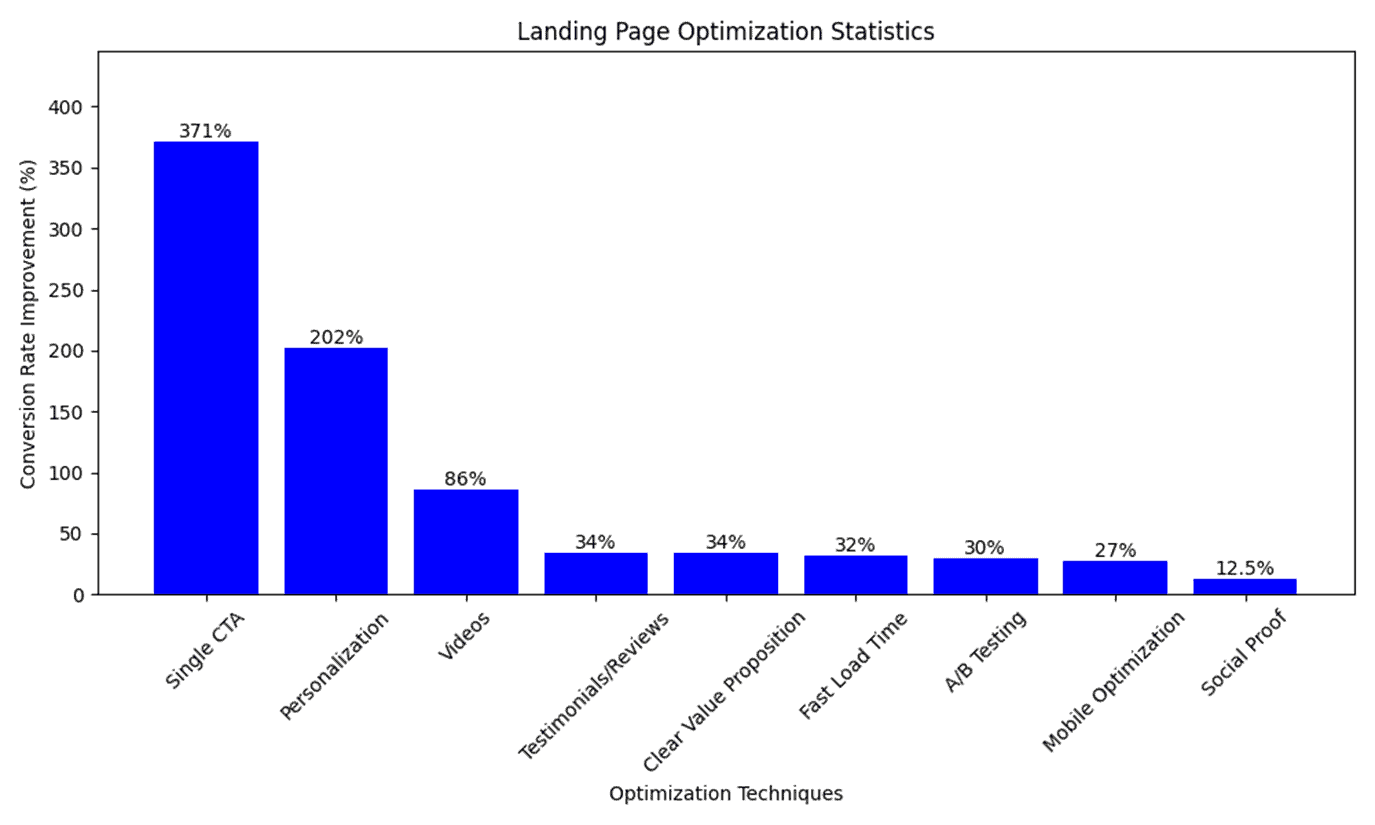
CRO Statistics – Conversion Funnel
- Top of the funnel (awareness): 2% to 4% conversion rate.
- Middle of the funnel (consideration): 20% to 30% conversion rate.
- Bottom of the funnel (purchase): 2% to 5% conversion rate.
- Cart abandonment rate: The global average is around 75.6%.
- Form abandonment rate: The average is approximately 81%.
- A one-second delay in page load time can lead to a 7% reduction in conversions.
- 53% of mobile users will abandon a website if it takes longer than 3 seconds to load.
- Retargeting ads can increase conversion rates by 150% or more.
- Only 2% of website visitors convert on their first visit, but retargeting can bring back 43% of them.
- Personalization can increase conversion rates by 10% or more.
- 80% of consumers are more likely to make a purchase when brands offer personalized experiences.
- Websites with live chat have a 10% higher conversion rate compared to those without.
- 79% of consumers prefer live chat for its instant support and assistance during the buying process.
(Source: HubSpot, WordStream, Baymard Institute, Formisimo, Neil Patel, Google, Invesp, Retargeter, Invesp, Epsilon, Econsultancy)
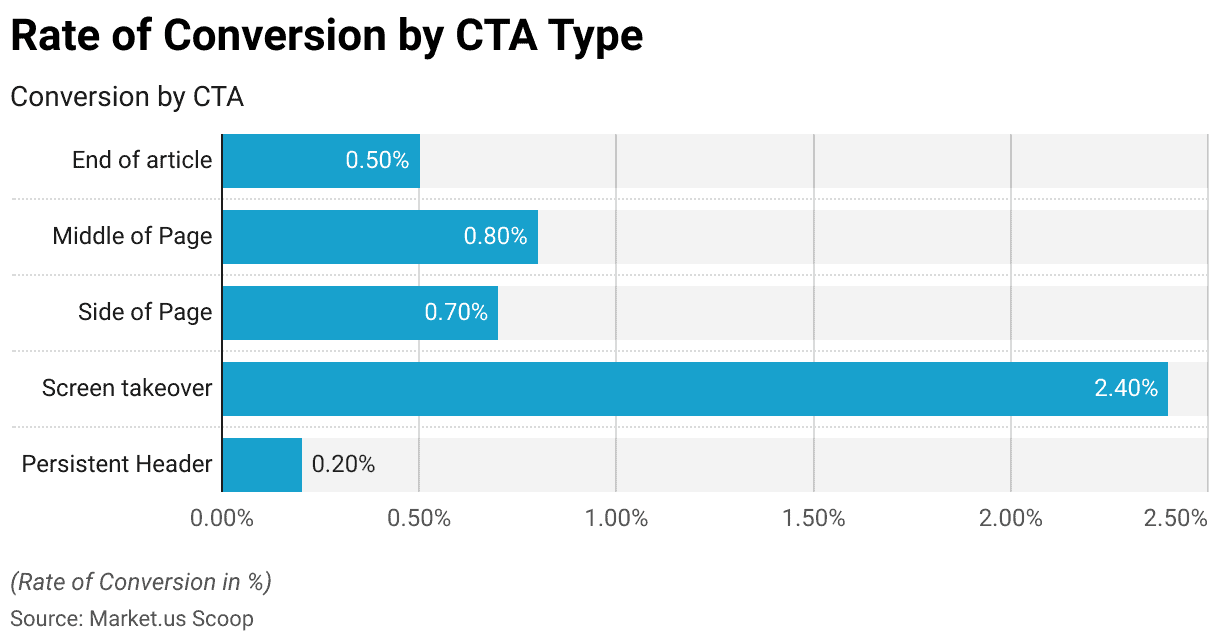
CRO Statistics – A/B Testing and Conversion Optimization
- A/B testing can increase conversion rates by an average of 49%.
- Companies that carry out A/B testing see an average conversion rate improvement of 14%.
- Only about 44% of companies use A/B testing to make data-driven decisions.
- Approximately 71% of companies run fewer than five tests per month.
- Mobile A/B testing can increase conversion rates by up to 27%.
- A/B testing on call-to-action (CTA) buttons can result in a 49% improvement in click-through rates.
- A/B testing email campaigns can increase click-through rates by up to 49%.
- On average, A/B testing takes around two to four weeks to reach statistical significance.
- A/B testing is most effective when there is a large volume of traffic, with a minimum of 1,000 visitors per variation.
- A/B testing is effective for both small and large businesses, with an average conversion rate improvement of 23% for small businesses and 16% for larger companies.
(Source: Econsultancy, ContentVerve, Instapage, HubSpot, WordStream, VWO, CXL)
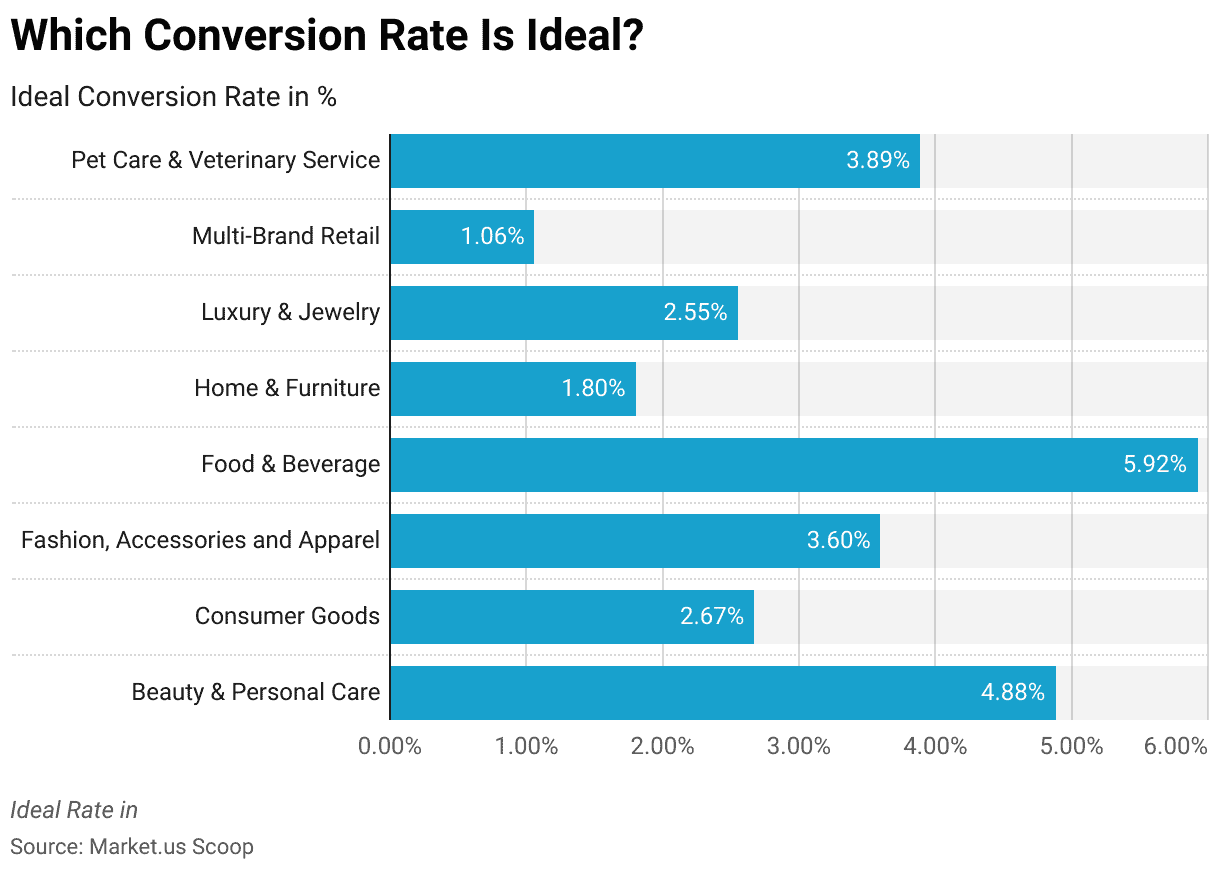
CRO Statistics – Personalization and Conversion Rates
- Personalized calls-to-action (CTAs) have a 202% higher conversion rate than generic CTAs.
- 80% of consumers are more likely to make a purchase when brands offer personalized experiences.
- 91% of consumers are more likely to shop with brands that provide relevant offers and recommendations.
- Personalized email campaigns have an average open rate of 18.8%, compared to 13.1% for non-personalized emails.
- Emails with personalized subject lines have a 26% higher open rate.
- Segmenting email campaigns based on user behavior can increase revenue by 760%.
- 35% of Amazon’s revenue is generated by its recommendation engine.
- Websites that feature personalized product recommendations experience a 50% higher conversion rate.
- Personalized product recommendations can increase average order value by up to 50%.
- Websites that personalize their content based on user behavior can see a 20% increase in conversions.
- 74% of customers feel frustrated when website content is not personalized.
- 52% of consumers are likely to switch brands if a company doesn’t personalize its communications.
(Source: HubSpot, Epsilon, Accenture, Statista, Campaign Monitor, Barilliance, Instapage, Infosys, SmarterHQ, McKinsey)
CRO Statistics – User Experience (UX) and Conversion Rates
- Websites that provide a great user experience have a conversion rate of around 14.4%, while websites with poor user experience have a conversion rate of only 6%.
- 88% of online consumers are less likely to return to a website after a bad user experience.
- Slow-loading websites leads to high bounce rates, with 53% of mobile users abandoning a site if it takes longer than 3 seconds to load.
- A well-designed user interface can increase conversions by up to 200%.
- Websites with simple, clear, and visually appealing CTAs can experience a 200% increase in conversions.
- Mobile-optimized websites have a 5.7% higher conversion rate compared to non-optimized websites.
- User-centered design can lead to a 225% increase in website conversions.
- 94% of first impressions are related to website design and user experience.
- A one-second delay in page load time can result in a 7% reduction in conversions.
- Websites that provide a personalized experience for users can increase conversions by up to 300%.
(Source: Experience Dynamics, Sweor, Google, Forrester Research, Adobe, Invision, ResearchGate, Akamai, Econsultancy)

Impact of Video Content On CRO Statistics
- Including a video on a landing page can increase conversion rates by up to 80%.
- 90% of customers claim that videos help them make buying decisions.
- Using videos in email marketing can increase click-through rates by 200-300%.
- Videos generate 12 times more shares on social media than text and images combined.
- 64% of customers are more likely to purchase a product online after watching a video about it.
- Having a video on a product page can increase the likelihood of a purchase by 144%.
- Including a video in a marketing, email can lead to a 200-300% increase in click-through rates.
- Landing pages with videos can experience an 80% increase in time spent on the page.
- 96% of consumers find videos helpful for making online purchase decisions.
- Videos can increase organic search traffic by 157%.
(Source: HubSpot, Social Media Today, SmallBizTrends, Neil Patel, Insivia, Animoto, BrightEdge, Unbounce)
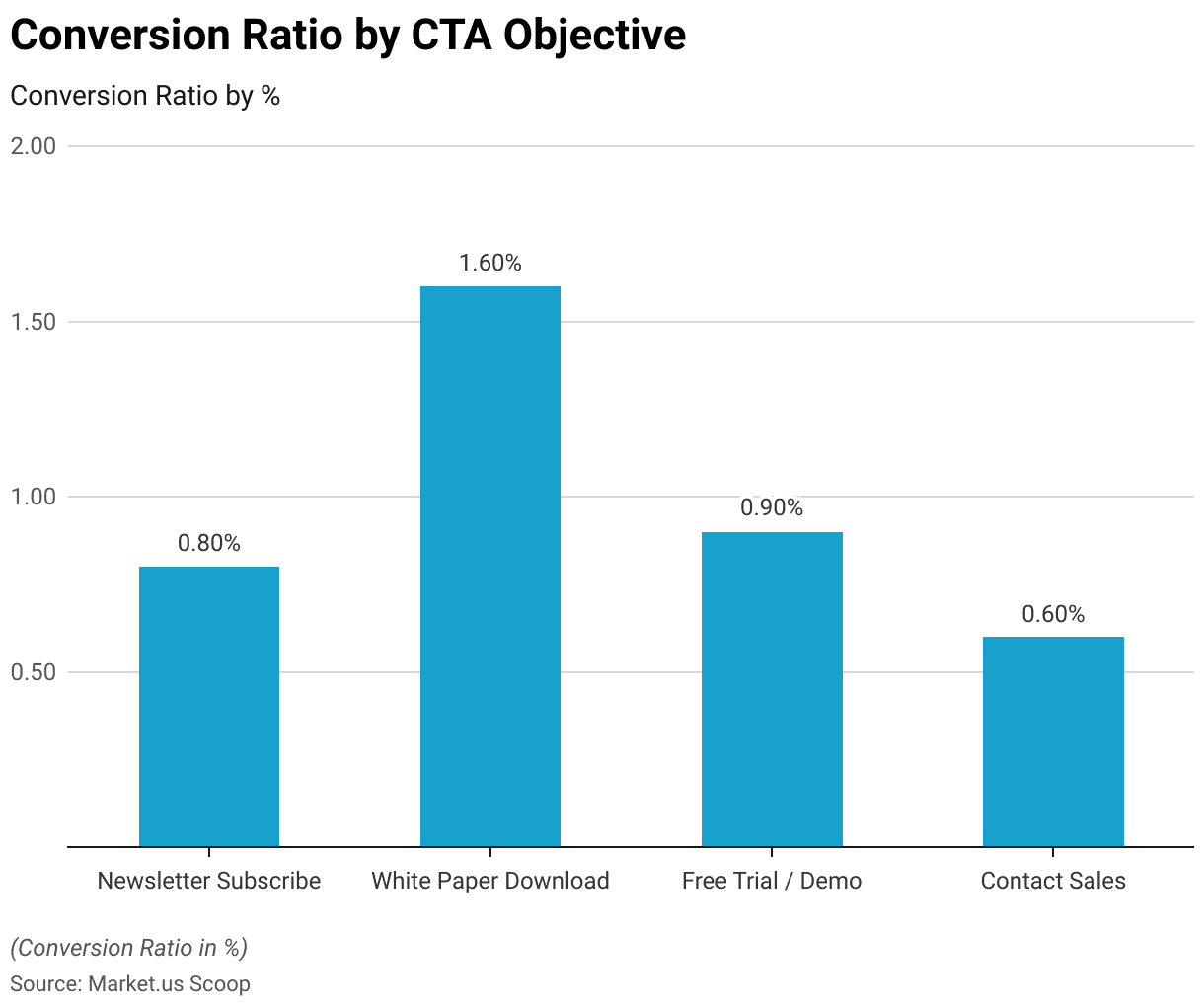
Challenges and Pitfalls in CRO
- Only 22% of businesses are satisfied with their conversion rates due to resource constraints.
- 28% of marketers cite budget constraints as a significant obstacle to improving conversion rates.
- Only 22% of businesses are satisfied with their ability to use data effectively to improve conversions.
- 63% of marketers struggle with analyzing and acting on data effectively.
- Only 31% of companies have a structured approach to testing and optimization.
- 49% of organizations do not have a structured or consistent testing strategy.
- 88% of online consumers are less likely to return to a site after a bad experience.
- 39% of users will stop engaging with a website if images won’t load or take too long to load.
- Mobile conversion rates are 64% lower than desktop conversion rates.
- 53% of mobile users abandon a website if it takes longer than three seconds to load.
- 85% of consumers will not buy from a website if they have security concerns.
- 70% of online shoppers abandon their carts due to a lack of trust in the website’s security.
- 74% of customers feel frustrated when website content is not personalized.
- Only 22% of businesses are satisfied with their ability to personalize the customer experience.
(Source: Econsultancy, HubSpot, Adobe, Smart Insights, Google, Blue Corona, Baymard Institute, Infosys)
Recent Developments
Merger and Acquisition:
- IQVIA’s Acquisition of Biotech Firm MedTech: IQVIA, a prominent CRO, completed the acquisition of MedTech, a biotech company specializing in medical device development.
- The acquisition, valued at $500 million, strengthens IQVIA’s expertise in medical device research and expands its service offerings in the healthcare sector.
New Product Launches:
- PAREXEL’s Launch of Real-World Evidence Platform: PAREXEL, a leading CRO, introduced a new real-world evidence platform designed to enable pharmaceutical companies to generate insights from real-world data for drug development and market access.
- The platform offers advanced analytics capabilities and access to a vast repository of real-world patient data, enhancing decision-making throughout the drug development lifecycle.
Funding:
- Series C Funding Round for Clinical Research Startup: CliniOps, a startup specializing in digital solutions for clinical research, secured $20 million in Series C funding led by venture capital firm Sequoia Capital.
- The funding will support CliniOps’ expansion efforts and the development of innovative software solutions to streamline clinical trial operations and improve patient recruitment and engagement.
Innovation in Clinical Trial Technologies:
- Adoption of Digital Health Technologies: CROs are increasingly adopting digital health technologies such as wearable devices, remote monitoring tools, and electronic data capture systems to enhance the efficiency and accuracy of clinical trials.
- These technologies enable real-time data collection, remote patient monitoring, and decentralized trial designs, facilitating faster recruitment, improved patient retention, and enhanced data quality in clinical research.
Expansion of Outsourcing Partnerships:
- Strategic Collaborations Between CROs and Biopharmaceutical Companies: CROs are forming strategic partnerships and collaborations with biopharmaceutical companies to provide comprehensive clinical research services and support drug development efforts.
- These partnerships leverage the expertise and resources of both parties to accelerate the development of new therapies and bring them to market more efficiently.
Conclusion
CRO Statistics – Conversion Rate Optimization (CRO) is a crucial practice for businesses seeking to maximize their online performance.
By employing data-driven strategies, conducting a thorough analysis, and making iterative improvements to website design, content, and user experience, CRO aims to enhance the conversion funnel and drive higher conversion rates.
Through continuous testing, optimization, and refinement, businesses can unlock their full potential, increase customer engagement, and ultimately achieve their conversion goals.
CRO is a dynamic and ongoing process that enables businesses to adapt and thrive in the competitive online landscape.
FAQs
Conversion Rate Optimization (CRO) is the process of increasing the percentage of website visitors or users who take the desired action, such as making a purchase, signing up for a newsletter, or filling out a form. It involves analyzing user behavior, optimizing website elements, and conducting experiments to improve the conversion rate.
Generally, a good conversion rate falls between 2% and 5%. However, it’s important to note that what’s considered good can vary widely, and it’s best to compare your conversion rate against industry benchmarks and your historical data.
The success of CRO efforts can be measured by tracking key performance indicators (KPIs) such as conversion rate, revenue per visitor, average order value, bounce rate, and engagement metrics like time on page or pages per session. It’s important to set specific goals and track them over time to evaluate the impact of your CRO initiatives.
Discuss your needs with our analyst
Please share your requirements with more details so our analyst can check if they can solve your problem(s)



